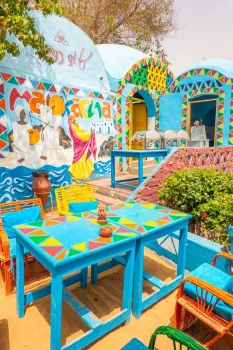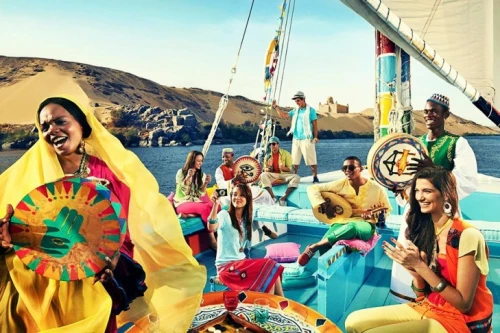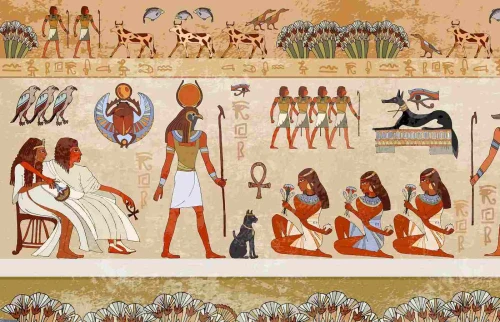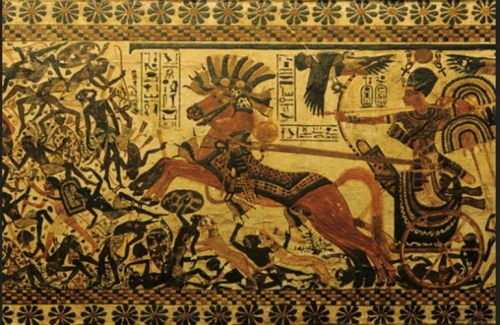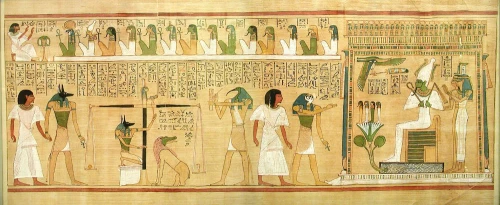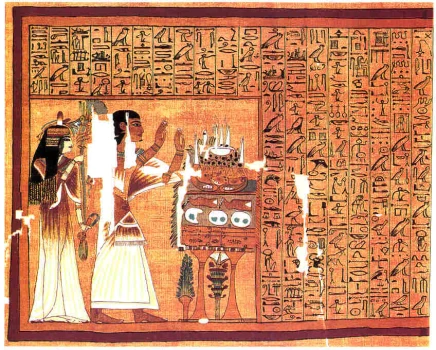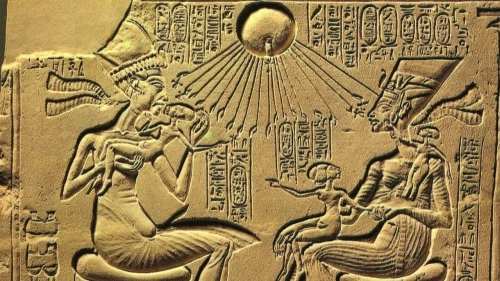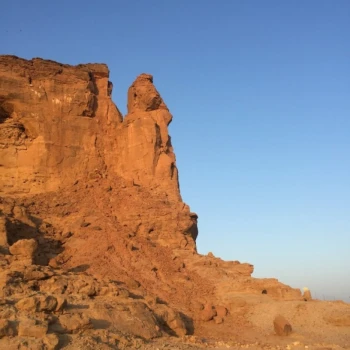
GEBEL BARKAL A sacred mountain in Nubia, below Egypt's southern border, Gebel Barkal was home to the great god Amun. To the ancient Egyptians, the sandstone mountain butte with a freestanding peak looked like a giant rearing cobra (uraeus) wearing the white crown of Upper Egypt, and they took it as a sign of divine kingship. When the freestanding stone peak was examined by Egyptologist Tim Kendal, he discovered that in ancient times the peak was covered with a sheath of gold (the nail holes are still visible).
Egyptian mythology calls Gebel Barkal jew web (the pure mountain), home of the great god Amun, who dwells in the mountain along with other gods. His title Lord of the Thrones of Two Lands represents his dominion over Egypt and Nubia. For the Egyptians, the uraeus (or rearing cobra) was a symbol of kingship, of protection of the king, and the divine mother of the king.
Images natural or man-made could hold powerful magic, and the Egyptians and the Nubians who followed the Egyptian religion recognized Gebel Barkal as a sacred and magical space. Because Nubia had gold mines, the pharaoh armies and trading parties invaded Nubia from the time of the Old Kingdom (2686 - 2181 B.C). In the Eighteenth Dynasty, King Thutmose III (1504–1452) defeated the local king, erected a stela (stone slab) at Gebel Barkal, and declared that this was Egypt’s new southern boundary. He built a fortress to secure his gold and a large temple to Amun inscriptions on the temple wall tell us that a statue of Amun spoke to the priests.
Near the great Temple of Amun were other temples for the goddesses Mut, Hathor, Tefnut, and perhaps Isis one name has been lost. Later kings enlarged the temple and created new sanctuaries and temple administrative offices of their own. By the Twentieth Dynasty, Egypt had grown weak, and Gebel Barkal was abandoned. By this time, the Nubians had adopted much of Egyptian culture and religion, and as the Nubian kings grew stronger, they saw themselves as legitimate heirs to the throne of Egypt.
Finally, they invaded and ruled Egypt for about 60 years. The cult of Amun at Gebel Barkal was continued by the Nubian kings who also worshipped Horus, Osiris, and Khnum. The Nubian kings revived the failing religion in Egypt, rebuilt the temples, and built their pyramids in Nubia, for they wanted to be buried near Gebel Barkal. Within proximity to Gebel Barkal are three of the four Nubian pyramid fields the Gebel Barkal Pyramids, the el Kurru Pyramids, and the Nuri Pyramids. The fourth pyramid site in Nubia is at Meroe, southeast of Gebel Barkal, and between the fifth and sixth cataracts.
 English
English
 Spain
Spain

